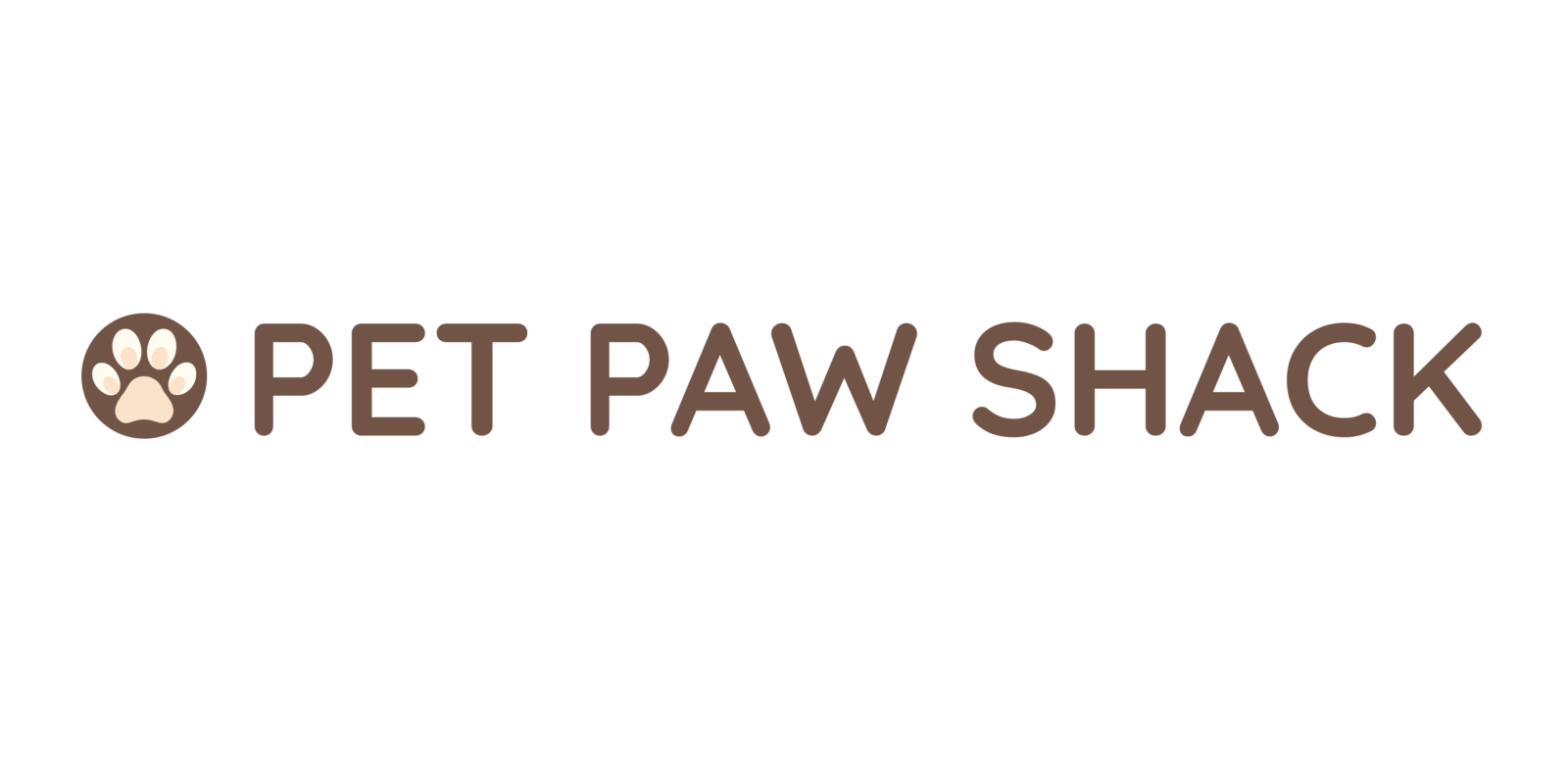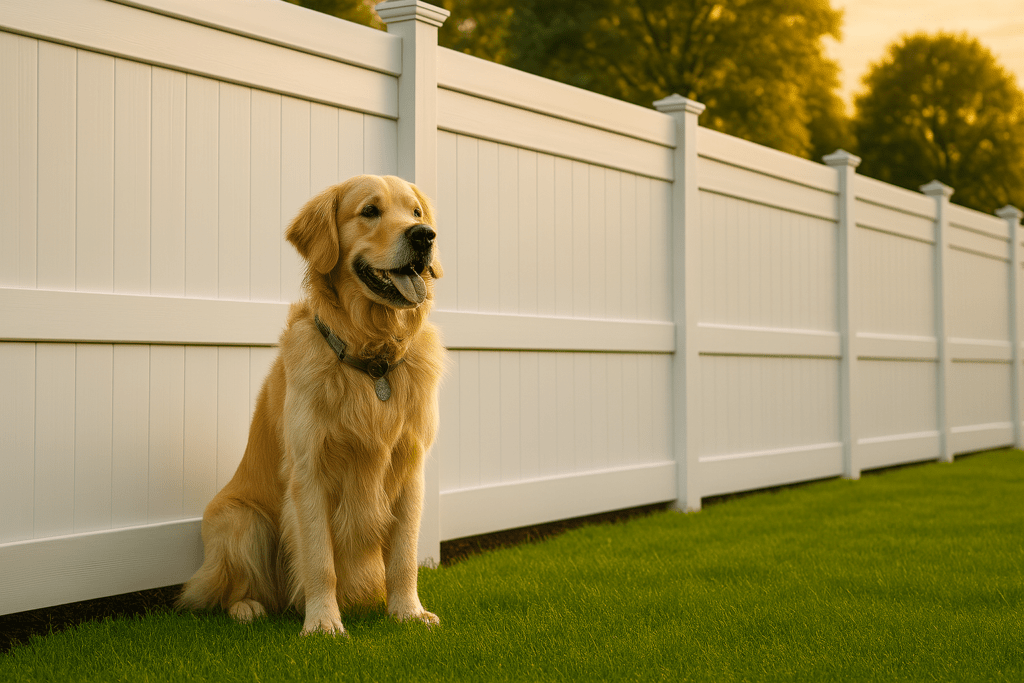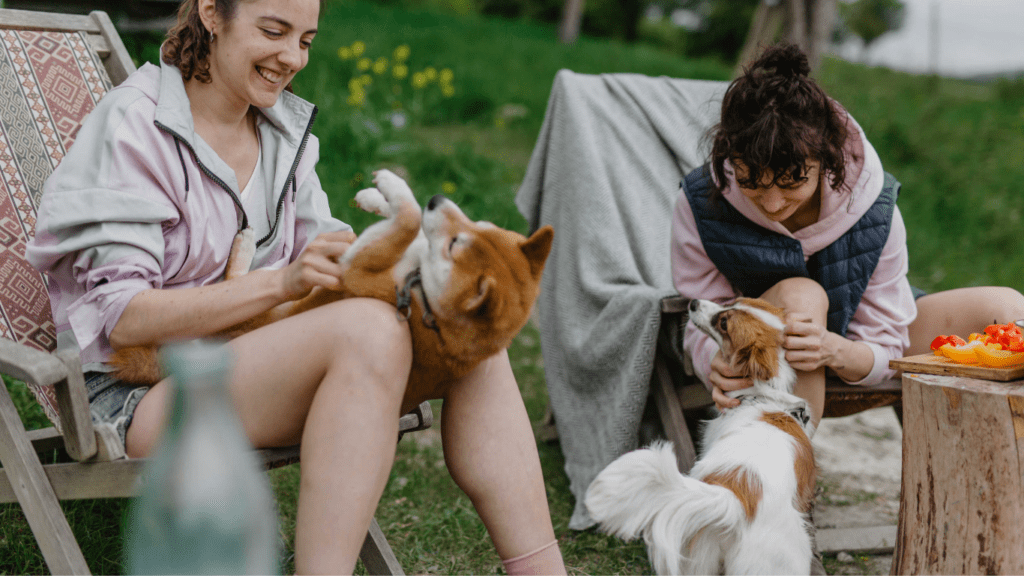When it comes to keeping pets safe at home, choosing the right fence is a crucial decision that directly impacts their well-being, freedom, and security. The right fence not only keeps your pets safely contained but also protects them from hazards beyond your yard. Which type of fencing is best for pet safety?
Vinyl fencing is generally considered the best choice for most pet owners, offering a smooth, durable, and low-maintenance surface that minimizes injury risks, prevents climbing, and creates a solid barrier that keeps pets secure while reducing distractions from the outside world.
However, this answer simplifies a decision that should account for your pet’s size, behavior, and your property’s unique conditions. A fence that works perfectly for a small dog might not suit an athletic jumper or a determined digger. This is why consulting with a reputable fence installation company that understands pet containment is often recommended before making a final decision.
Factors to Consider When Choosing Pet-Safe Fencing
The “best” fence depends on your pet’s size, behavior, and your environment. Before deciding, consider:
- Containment needs: For energetic dogs who like to jump or dig, a tall and secure fence with anti-dig reinforcements is key. Smaller pets may require tighter spacing between fence pickets to prevent squeezing through gaps.
- Durability: Pets may scratch, jump on, or rub against fences. Choose materials that can withstand wear and tear without posing risks like splinters or sharp edges.
- Visibility: For anxious pets, a fence that limits views of outside distractions (like passing dogs or vehicles) can help reduce stress.
Best Fencing Options for Pet Owners
- Vinyl Fencing: Vinyl is an excellent pet-friendly option. It’s durable, low-maintenance, and doesn’t splinter like wood. Solid vinyl panels can provide privacy and security, preventing pets from seeing triggers beyond the yard.
- Wood Fencing: Wood offers a classic look but may require more maintenance, including regular inspections for rot, splinters, and loose boards. Some pets may chew on wood, so supervision is key.
- Chain-Link Fencing: Chain-link is budget-friendly and strong but provides less privacy. Ensure the bottom is secured to prevent digging, and consider adding privacy slats to reduce visual stimulation.
- Aluminum or Wrought Iron Fencing: Sturdy and long-lasting, but may not be ideal for small pets if the spacing between pickets is too wide. Ensure gaps are narrow enough to prevent escape.
Special Considerations for Pet Safety
- Preventing escapes: For diggers, install a barrier buried several inches underground or add a concrete footing along the fence line.
- Height requirements: Active dogs may require fences at least 5–6 feet high to prevent jumping over.
- Safe materials: Avoid treated woods that contain harmful chemicals, and check for sharp edges or exposed nails.
Local Rules and Guidelines
Before installation, check local regulations and homeowners’ association (HOA) rules that may restrict fence types, heights, or styles. Ensure the fence is installed securely along your property line to avoid disputes and provide a safe environment for your pet.
Maintenance for a Safe Fence
Regular inspections are crucial to keep your fence safe and effective:
- Check for gaps, weak spots, or damage.
- Look for sharp edges or protruding nails.
- Ensure gates close and latch securely.
A well-maintained fence ensures long-term security for your pets and extends the life of your investment.
Conclusion
A well-chosen fence gives pet owners peace of mind, knowing their furry companions can play and relax safely outdoors. Whether you have an active dog, a curious cat, or multiple pets, evaluating fencing options with your pet’s safety in mind is the best way to protect them.
When in doubt, consult with local fencing professionals who can recommend the right solution for your property and your pets’ specific needs.


 Veterinary Advisor & Health Expert
Anthony Brooks is the in-house Veterinary Advisor at Pet Paw Shack, offering expert advice on pet health, disease prevention, and general veterinary care. With years of experience as a licensed veterinarian, Anthony helps guide pet owners through essential topics like vaccinations, routine checkups, and emergency care. His commitment to keeping pets healthy ensures that Pet Paw Shack delivers trusted and accurate medical insights.
Veterinary Advisor & Health Expert
Anthony Brooks is the in-house Veterinary Advisor at Pet Paw Shack, offering expert advice on pet health, disease prevention, and general veterinary care. With years of experience as a licensed veterinarian, Anthony helps guide pet owners through essential topics like vaccinations, routine checkups, and emergency care. His commitment to keeping pets healthy ensures that Pet Paw Shack delivers trusted and accurate medical insights.
